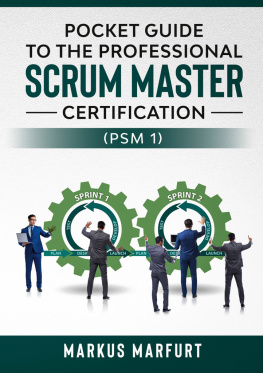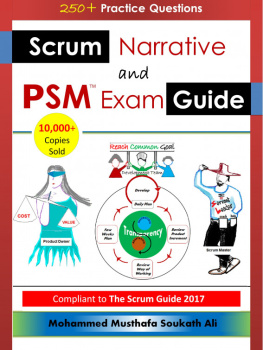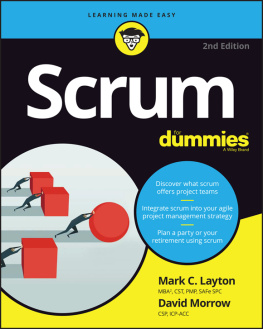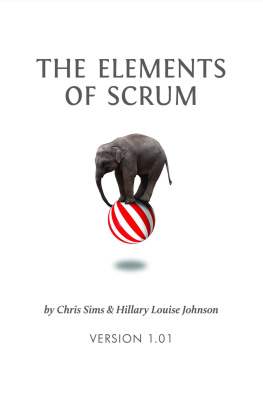Peter Götz - Professional Scrum Team, The (The Professional Scrum Series)
Here you can read online Peter Götz - Professional Scrum Team, The (The Professional Scrum Series) full text of the book (entire story) in english for free. Download pdf and epub, get meaning, cover and reviews about this ebook. year: 2020, publisher: Addison-Wesley Professional, genre: Home and family. Description of the work, (preface) as well as reviews are available. Best literature library LitArk.com created for fans of good reading and offers a wide selection of genres:
Romance novel
Science fiction
Adventure
Detective
Science
History
Home and family
Prose
Art
Politics
Computer
Non-fiction
Religion
Business
Children
Humor
Choose a favorite category and find really read worthwhile books. Enjoy immersion in the world of imagination, feel the emotions of the characters or learn something new for yourself, make an fascinating discovery.

- Book:Professional Scrum Team, The (The Professional Scrum Series)
- Author:
- Publisher:Addison-Wesley Professional
- Genre:
- Year:2020
- Rating:3 / 5
- Favourites:Add to favourites
- Your mark:
- 60
- 1
- 2
- 3
- 4
- 5
Professional Scrum Team, The (The Professional Scrum Series): summary, description and annotation
We offer to read an annotation, description, summary or preface (depends on what the author of the book "Professional Scrum Team, The (The Professional Scrum Series)" wrote himself). If you haven't found the necessary information about the book — write in the comments, we will try to find it.
Peter Götz: author's other books
Who wrote Professional Scrum Team, The (The Professional Scrum Series)? Find out the surname, the name of the author of the book and a list of all author's works by series.
Professional Scrum Team, The (The Professional Scrum Series) — read online for free the complete book (whole text) full work
Below is the text of the book, divided by pages. System saving the place of the last page read, allows you to conveniently read the book "Professional Scrum Team, The (The Professional Scrum Series)" online for free, without having to search again every time where you left off. Put a bookmark, and you can go to the page where you finished reading at any time.
Font size:
Interval:
Bookmark:

ePUB is an open, industry-standard format for eBooks. However, support of ePUB and its many features varies across reading devices and applications. Use your device or app settings to customize the presentation to your liking. Settings that you can customize often include font, font size, single or double column, landscape or portrait mode, and figures that you can click or tap to enlarge. For additional information about the settings and features on your reading device or app, visit the device manufacturers Web site.
Many titles include programming code or configuration examples. To optimize the presentation of these elements, view the eBook in single-column, landscape mode and adjust the font size to the smallest setting. In addition to presenting code and configurations in the reflowable text format, we have included images of the code that mimic the presentation found in the print book; therefore, where the reflowable format may compromise the presentation of the code listing, you will see a Click here to view code image link. Click the link to view the print-fidelity code image. To return to the previous page viewed, click the Back button on your device or app.
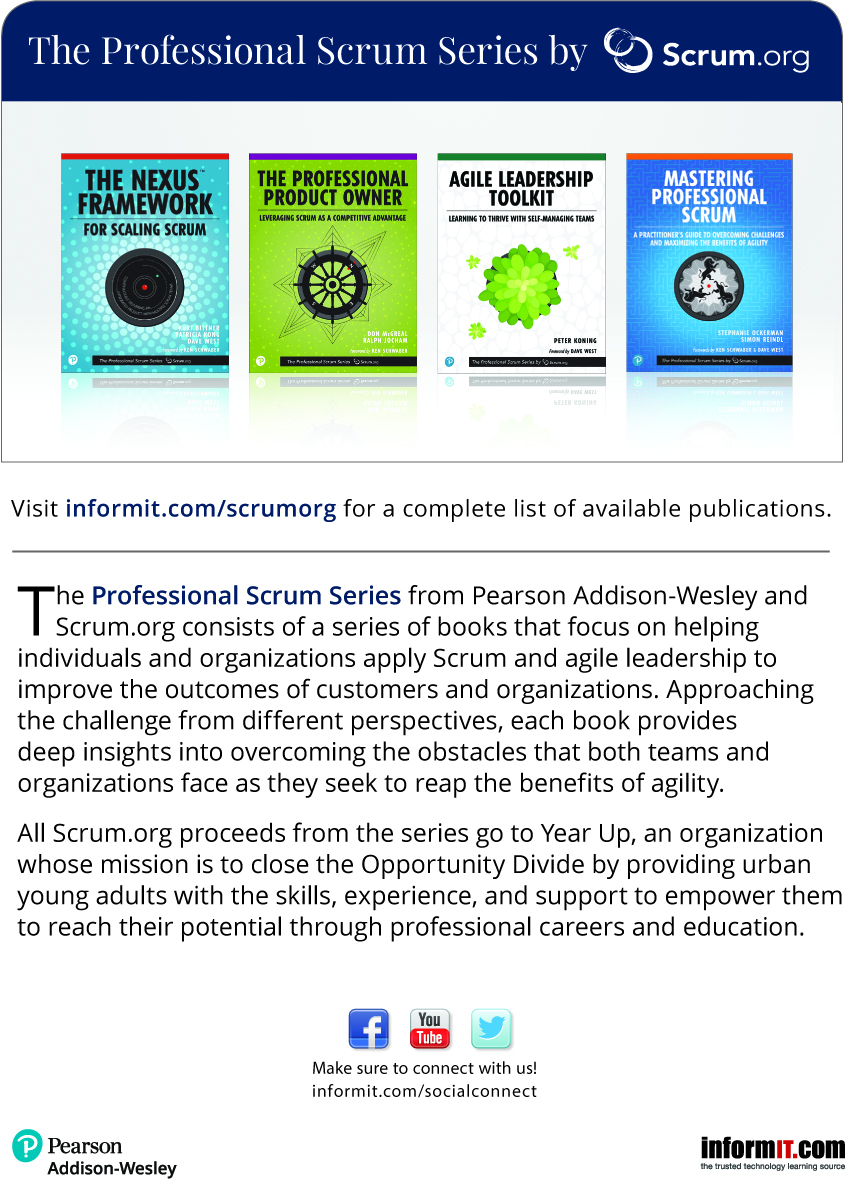
Growing and Empowering Cross-Functionality and Resiliency in a Complex World
Peter Gtz
with contributions by
Uwe M. Schirmer and
Kurt Bittner

Boston Columbus New York San Francisco Amsterdam Cape Town
Dubai London Madrid Milan Munich Paris Montreal Toronto Delhi Mexico City
So Paulo Sydney Hong Kong Seoul Singapore Taipei Tokyo
Many of the designations used by manufacturers and sellers to distinguish their products are claimed as trademarks. Where those designations appear in this book, and the publisher was aware of a trademark claim, the designations have been printed with initial capital letters or in all capitals.
The authors and publisher have taken care in the preparation of this book, but make no expressed or implied warranty of any kind and assume no responsibility for errors or omissions. No liability is assumed for incidental or consequential damages in connection with or arising out of the use of the information or programs contained herein.
For information about buying this title in bulk quantities, or for special sales opportunities (which may include electronic versions; custom cover designs; and content particular to your business, training goals, marketing focus, or branding interests), please contact our corporate sales department at or (800) 382-3419.
For government sales inquiries, please contact .
For questions about sales outside the U.S., please contact .
Visit us on the Web: informit.com/aw
Library of Congress Control Number: 2020944449
Cover design and illustration by Sabrina Love
Page : Architecture pretzel, Stefan Toth, Vorgehensmuster fr Softwarearchitektur, 3rd Edition, 978-3-446-46004-1, 2019, p. 17.
Page : "Culture is an... in these groups." Tylor, Edward. Primitive Culture, Vol. 1 (1871).
Copyright 2021 Peter Gtz, Uwe M. Schirmer, and Scrum.org
All rights reserved. This publication is protected by copyright, and permission must be obtained from the publisher prior to any prohibited reproduction, storage in a retrieval system, or transmission in any form or by any means, electronic, mechanical, photocopying, recording, or likewise. For information regarding permissions, request forms and the appropriate contacts within the Pearson Education Global Rights & Permissions Department, please visit www.pearson.com/permissions/.
ISBN-13: 978-0-13-486215-6
ISBN-10: 0-13-486215-5
ScoutAutomatedPrintCode
We live in complex times. Technology has helped us bring the world together, enabling us to knit together complex supply chains and collaborate with colleagues across the globe. At the same time, this same technology seems, at times, to outpace our ability to harness it for good. To meet the challenges and seize the opportunities of this modern world, our view of work must shift from it being a standard set of managed tasks, performed by specialists and coordinated by management to deliver value, to an organization characterized by empowered teams whose members collaborate openly to fluidly adapt to new challenges.
At the heart of this new organization are teams of creators focused on delivering value to customers. At the heart of Scrum is also a teamthe Scrum Team. Being part of an effective, high-performing team is one of the most rewarding and powerful benefits of Scrum. A great team will succeed in the face of great challenges and will often deliver what others thought impossible.
But the Scrum Guide provides very little guidance for how Scrum Team members work together to deliver value. For many teams, Scrum exposes challenges in working together to which the team is unaccustomed. Overcoming these challenges can be frustrating to teams new to Scrum because it exposes the teams shortcomings but does not help them fix them. These teams can sometimes feel that Scrum wont work for us. They struggle with questions such as How do you build a great team? and What does it mean to be a member of a Scrum Team?
This book answers those questions. It describes the new rules of the game for being part of a high-performing team. Peter, Uwe, and Kurt explain what a Scrum Team is and how Scrum Teams deliver value. They describe, through an extended case study, the challenges and opportunities of working in this new way. The book paints a comprehensive picture of the future of teamwork, never glossing over the difficulties of working with others. The underlying principles are based on the fundamentals of Scrum and the ideas of professionalism.
Fundamental to this journey are the following:
Empirical process: An approach that is rooted in learning by doing and adaptation based on that experience. This book describes what that means to a team, and how team members work together to learn and grow by delivering in small increments, measuring the results, and inspecting and adapting as they proceed.
Self-organization and empowered teams: What sets apart creative, empowered teams from their merely average peers is their ability to determine, for themselves, how they work, how they organize, and how they make decisions. But just telling a group of people they should self-organize does not suddenly make it so; self-organization is a complex team skill that takes time to learn and master. This book provides practical guidance on how to help teams grow their effectiveness.
Continuous improvement: Scrum helps teams to continuously improve their product, but it also helps them to continuously improve themselves, their way of working, and their skills. This book describes where and when retrospection and improvement happen.
In this context, professionalism means building on this foundation in the following four dimensions:
Discipline, in learning from delivering valuable product increments about how the team approaches its work and in improving the value the team delivers to customers. This book describes approaches that a Scrum Team can apply from day one. It also highlights the difference between how discipline was realized in the industrial age and how it is realized in todays complex world.
Font size:
Interval:
Bookmark:
Similar books «Professional Scrum Team, The (The Professional Scrum Series)»
Look at similar books to Professional Scrum Team, The (The Professional Scrum Series). We have selected literature similar in name and meaning in the hope of providing readers with more options to find new, interesting, not yet read works.
Discussion, reviews of the book Professional Scrum Team, The (The Professional Scrum Series) and just readers' own opinions. Leave your comments, write what you think about the work, its meaning or the main characters. Specify what exactly you liked and what you didn't like, and why you think so.

